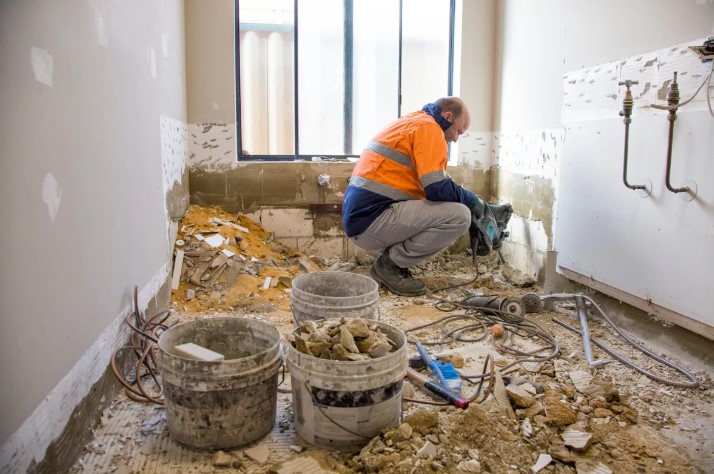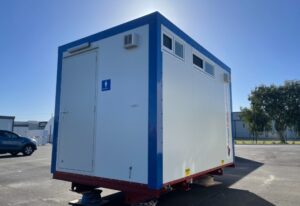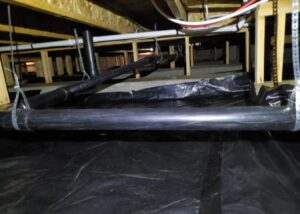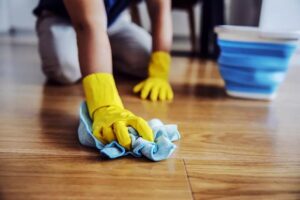A Little Home Maintenance Can Help You Avoid Serious Water Damage


According to the Insurance Information Institute, water damage is the second most common claim for homeowners, accounting for about 1 in 60 insured homes around the country at an average expense of $11,065 per claim.
When most people think water damage they’re thinking hurricanes and major floods — but the truth is, most water damage comes from smaller things like leaking appliances or pipes, or water intrusions over time, rather than catastrophic events.
You can avoid water damage of this kind with proper care and maintenance. Here are some examples:
How Far Does The Water Damage … Whoa!
Here you can see what water can do to a structure over time. It’s been running down the side of the structure, damaging the wood, coming through the wall, and rotting through the wall and the floor below. Somebody needed to address the runoff with rain gutters and downspouts and properly seal the foundation and doorway to avoid water damage through intrusions in the exterior. Now you’ve got foundation repair, sheetrock, flooring, carpet, and likely mold remediation.
Meet Me at The Watering Hole
In this video, you hear the inspector mention that he noticed some water stains inside the home, so he went looking for the source. He found damaged flashing on the roof.
The flashing seals up edges where water can intrude, and when that gets damaged, you can see all the different things that are being affected here — the roofing decking, the members, not to mention the uninvited guests that have found themselves a lovely watering hole at which to gather, and whatever destruction they may have wrought.
Damage to flashing can happen in heavy winds, so it’s worth checking out after a big storm, or some of these high-wind days we’ve been having. Also — check out your attic once in a while to look for signs of leaks and vermin activity. Because, YIKES. 🐀
Fan-tastic Rain Cap

This reminds me of the old saying “useless as a screen door on a submarine” except that it does sort of accomplish one of the functions of a chimney cap (keeping out critters). But why wouldn’t they just use all chicken wire? Possibly they got up there with that fan, thinking, “This is PERFECT!” and just decided they were pot committed at that point, so they just kept adding materials until it was covered.
I really appreciate the use of electrical tape, though, because we all know that a little tape fixes everything, and is certainly weatherproof.
What you want in a rain cap/chimney cap, is something that protects you from rain getting into the chimney. Moisture damages the internal structure, eating away at the brick and mortar, forming rust and deterioration, damaging the firebox, or cracking the flue. Here’s what an actual chimney cap looks like:

Secret Garden Tub
This is a tricky one because not all garden tubs are this easy to access. Most builders will leave at least one access point, so it’s a good idea to check periodically to make sure nothing is leaking, growing, or (heaven forbid) living under there. The inspector caught this leak on a brand new build, so the new owners could avoid water damage before it even began. And shame on that builder for the off-center fulcrum support bathtub. When you’re buying a new construction home, make sure you look in all the nooks and crannies on that final blue tape inspection!
Keep an Eye Out For Water Damage
There’s only so much you can do to protect your home from big storms, but there is some water damage you can prevent. The best way you can avoid water damage from non-catastrophic events is by really getting to know the different systems of your home, paying attention, and noticing when something changes. Don’t let small noises, drips, cracks, or stains go without investigation. You can catch a problem while it’s still small and save yourself a lot of time and money.








